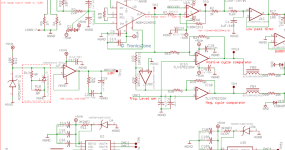/cdn.vox-cdn.com/uploads/chorus_image/image/63838710/1149086909.jpg.0.jpg)
For more than a year now, President Donald Trump has been playing chicken with China, instituting increasingly expensive tariffs to add pressure for a trade deal that never seems to materialize. So far, those tariffs have kept clear of consumer goods like smartphones or televisions, with the most damaging taxes restricted to intermediary products like soybeans or steel. But after talks broke down last week, a new set of tariffs pulled those products into the trade war, creating a nightmare scenario for the tech industry.
On Monday, the US Trade Representative (USTR) laid out plans to tax laptop and smartphone imports by as much as 25 percent, breaking into the kind of high-profile, price-sensitive goods that previous rounds had avoided. The new restrictions will go into effect on June 25th, giving Trump just over a month to settle on a deal that has eluded him for most of his term. It’s a disaster for electronics companies, which have largely escaped previous rounds, despite being hugely reliant on Chinese manufacturing. And even if the tariffs laid out by the USTR are short-lived, the result could mean the end of the open Chinese trade that has shaped the tech industry for decades.
The most immediate impact will be higher prices. Previous rounds of tariffs had been marginal enough that companies could simply eat the difference, but a 25 percent charge on marquee items like phones and laptops could be too much to bear. Experts say companies will have little choice to raise prices in response, adding hundreds of dollars to price tags. “Certainly for competitively priced products like PCs, there will be price increases, particularly in the short run,” says Brad Setser, a senior fellow at the Council on Foreign Relations. “It’s likely to be a fairly considerable shock to consumer prices.”
That shock could add up to hundreds of dollars for consumers. On Tuesday JPMorgan estimated that, for Apple, countering the cost of the tariffs would mean raising the price of the iPhone XS from $1,000 to $1,142, although Apple’s high margins mean it would likely absorb the cost without raising prices. More price-conscious companies like Lenovo and HP would have fewer options.
Versions of this price hike have already happened in other industries that were hit by earlier rounds of tariffs. The price of a washing machine has risen an average of $86 as a result of the tariffs announced in September, according to one study, while luggage prices rose 5 to 10 percent. The total price tag for US consumers since November could be as high as $18 billion.
In order to get prices back to pre-tariff levels, companies will have to reshape their supply chains, which can be a slow and expensive process. With an expensive new trade barrier between the US and China, companies will shift manufacturing for products bound for the US, opening factories in manufacturing rivals like Vietnam. Samsung has already started to shift production into Southeast Asia, potentially smoothing the next few years. But for any company still embedded in Chinese manufacturing, there’s a lot of work still to be done.
“It’s not a one-year process,” says Setser. “It’s a five-year process. And it’s expensive. But a 25 percent tariff incentivizes that kind of investment.”
Because the process is so slow, that shift away from China-based manufacturing is likely to stay in place even if the tariffs are repealed. It’s still possible that Trump will arrange a deal at the G20 summit in June, but with the threat of new tariffs permanently on the table, it may not matter. In effect, supply chain managers will be betting about the trade rules likely to be in place five years from now, which still look risky. “The safe forecast is that there’s going to be a lot more uncertainty,” says Setser “Even if the tariffs come off, it seems optimistic to assume that the friction between the US and China is going to permanently be put to bed.”
There are long-term costs of shifting away from China, too. A dense, localized network of suppliers and manufacturers makes the gadget business much easier. That’s one of the main reasons companies flocked to Shenzhen in the first place. A 25 percent import tax makes that system untenable for anyone serving the US market, and in the long-term, the breakdown of unfettered imports between the US and China makes basing your business around trans-Pacific trade routes seem like a risky bet.
It’s hard to say what the electronics industry will look like without that system. China has spent the last 40 years building its southern coast into an electronics powerhouse, often with measures like currency manipulation and industrial policy that would be out of bounds for other countries. The rise of Apple, Google, personal computers, and smartphones has all happened with those forces in the background, making prices a little bit lower and prototyping cycles a little bit faster. The trans-Pacific system has been weakening for years, but Trump’s tariff policies have plunged it into a sudden and unpredictable breakdown, at a time when flagging smartphone demand and saturated markets have left the industry weaker than ever. It’s too early to forecast doom, but if you’re a hardware company that isn’t Apple or Samsung, the next few years just got a lot tougher.
[“source=theverge”]
| M | T | W | T | F | S | S |
|---|---|---|---|---|---|---|
| 1 | 2 | 3 | 4 | 5 | 6 | 7 |
| 8 | 9 | 10 | 11 | 12 | 13 | 14 |
| 15 | 16 | 17 | 18 | 19 | 20 | 21 |
| 22 | 23 | 24 | 25 | 26 | 27 | 28 |
| 29 | 30 | |||||
























